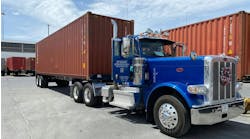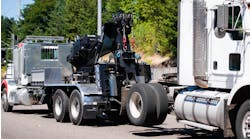As this column goes to press, the private and for-hire trucking industry is facing some difficult issues resulting from a July 24th decision by the U.S. Court of Appeals for the District of Columbia Circuit, which vacated two aspects of the Federal Motor Carrier Safety Administration's (FMCSA) hours-of-service (HOS) rules.
The Court instructed FMCSA to rescind the part of the rule that increased daily driving time from 10 to 11 hours, as well as the 34-hour restart provision, citing the agency's failure to provide an adequate explanation of the fatigue model used to support them.
Although the Court originally directed FMCSA to put the revised rules into effect by mid-September 2007, subsequent petitions delayed the change for an additional two weeks.
This presents a problem for trucking because many fleets have retooled their operations since the “new” rules were first introduced. Some fleets have extended their routes to take advantage of the additional hour of driving time. Others have optimized their mix of solo and dual-driver operations to capture the benefits of the 34-hour restart provision.
As I noted in my June 2003 column, the benefits accorded by this provision allow a solo driver to complete a 3,650-mile, four-leg round-trip from Central Iowa to Los Angeles in a seven-day period. Under the old rules, the same trip would take nine days.
Given the economic and driver productivity implications of this ruling, trucking has mounted an all-hands-on-deck assault to forestall and/or overturn it.
ATA has petitioned both the Court of Appeals and FMCSA to retain the current HOS rules while the agency considers the legal objections noted in the opinion, arguing that reversing HOS so quickly will lead to:
-
Major disruptions in the flow of freight traffic;
-
Patchwork enforcement effort, since many states can't readily meet the Court directed provisions;
-
Negative safety and fatigue consequences as drivers shift their on-duty/off-duty patterns.
These concerns are legitimate. First, the reversal will require a significant training effort, since many drivers are new to trucking and have no experience with the old rules. Second, carriers will be pressed to create the driver and vehicle capacity required to sustain a “freight flow status quo.” Some carriers may elect to pass that pressure down to their drivers; others may opt to decline shipments.
These developments come at an inopportune time for the industry. Driver turnover continues to vex the for-hire truckload community; energy costs continue to rise; and congestion on the roads is impacting productivity.
Some would say the industry finds itself in a box- canyon dilemma, with few available remedies.
This kind of dilemma underscores the importance of establishing effective risk management practices. One part of risk management is to get your staff to address what might otherwise be considered “unthinkable” scenarios. In fact, the current HOS conundrum should not have come as such a shock. We should have recognized it as a distinct possibility ever since the Public Citizen/Parents Against Tired Truckers/Teamsters coalition filed their first lawsuit in 2004.
Look at your own operation. Do you have a contingency plan for box-canyon scenarios? Have you tested the plan in real-world situations? As this current HOS situation illustrates, events that are beyond our control can ensnare even the most well-run operations.
Jim York is the ass't. vice president of technical services for Zurich Services Corp. Risk Engineering in Schaumburg, IL.


